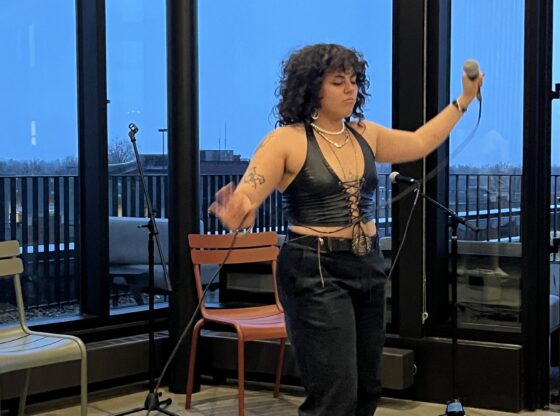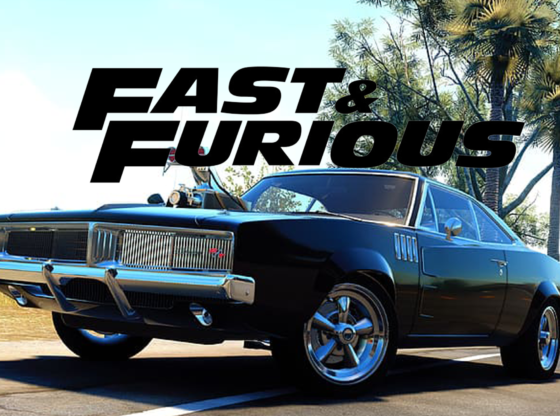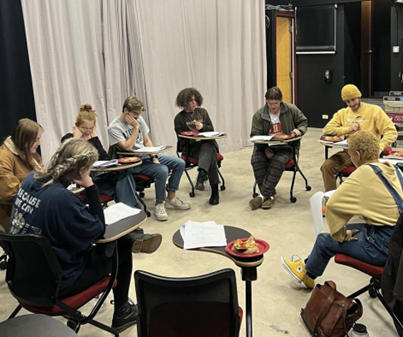The wait is over—“Oxymoron,” the highly anticipated album from TDE (Top Dawg Entertainment) member Schoolboy Q, is finally here after a year of delays. Featuring guest verses from fellow TDE labelmates Kendrick Lamar, Jay Rock and SZA, as well as rappers 2 Chainz, Tyler the Creator, Suga Free, Kurupt, BJ the Chicago Kid and Raekwon, “Oxymoron” also features production from an incredible list of producers such as Pharrell, Tyler the Creator, The Alchemist and Mike Will Made It. This album is meant to be Q’s breakout into mainstream stardom. Supported by smash singles Collard Greens and Man of the Year, the hype was definitely real.
After a few listens, the answer still is not clear. While not quite the level that friend and fellow rapper Mac Miller hailed it as when he said it was better than Kendrick’s universally adored 2012 album “good kid, m.A.A.d city,” it still brings to the table a unique blend of sounds that Q has become known for. A contradictory mix of west coast gangster rap and early-2000s east coast Jay-Z/50 Cent, the album is stylistically hard to pin down.
One thing that can be taken away from the album is the presence of his four-year-old daughter, Joy, throughout the album. She appears on the album cover and also features several speaking parts throughout. Q describes her as integral to the album, and the title is even about her. As he explained in an interview with DJ Whoo Kid in Jan., the title of “Oxymoron” is a representation of the bad things he has to do to take care of his daughter, who is scowling on the cover. It creates an uncomfortable atmosphere for the listener to hear a four-year-old’s voice and see her on the cover as her father details his past of drug dealing and his many sexual conquests.
In terms of the music though, “Oxymoron” is quite an enjoyable album throughout. With hypnotic beats that will have your head nodding constantly and Q’s voice jumping around, switching his flow up, it is hard to imagine someone not entertained as he tells stories from his youth with the gang, the 52 Hoover Crips. A big focus on the album deals with his past as an Oxycontin dealer and gang banger. Perhaps the most honest song on the album is “Prescription/Oxymoron.” The seven-minute song is split into two halves. The first is an ode to his love for prescription drugs and ends with his daughter trying to wake him up after an overdose. The second half, which could really be a completely different song, is a triumphant banger that fits as a sequel to the first half.
Q excels at making the listener really understand the emotion he felt while recording. When he details a six-minute story about his drug-addicted uncle on “Hoover Street,” he gives specific details that latch themselves in the listener’s mind along with smooth, addicting production, courtesy of TDE producer Soundwave.
When Q is at his best, he is spitting long and detailed bars that put the listener in his shoes. Usually he blends the lines between his bridge and hook while attempting to keep it from getting overly repetitive. He has friends in high places so his features are all on point. Jay Rock and Kendrick’s verses on “Los Awesome” and “Collard Greens” respectively have a large part in determining the quality of these tracks. Occasionally you wish the album would diverge in subject matter. While there is not anything inherently wrong with the explicit subject matter, one might think if Q wanted to attempt a jump into mainstream success, he would focus more on a broad range of topics. The west-coast, gangster aspect of the album may alienate some listeners, but at least it feels authentic to California G-funk history.
“Oxymoron” isn’t really comparable to “good kid, m.A.A.d city,” yet critics will undoubtedly attempt to hold Q up to Lamar’s standard. They are separate artists and it is not fair to what Schoolboy Q is trying to establish. The album is a compelling piece of work and it should catapult Q into the mainstream, but at the end of the day, the listener may feel let down due to the overwhelming hype.











